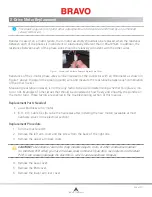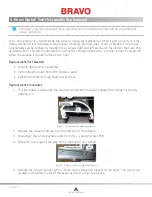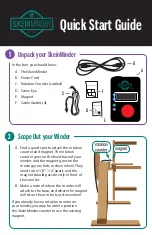
223 of 271
Final Functional Tests
Final functional tests should always be conducted on the Embroidery Peripheral whenever any major re-
pairs or adjustments are made. The purpose of these functional tests is to ensure that the correct repairs
and adjustments have been made and that no further machine functional issues remain.
Visual Inspection:
Always inspect the machine after making any repairs and make sure that:
• you have removed all tools and loose hardware;
• all harnesses are correctly connected, routed, and tied;
•
all hardware is correctly installed and torqued according to the torque specifications;
•
all covers installed prior to any function test, except for specific troubleshooting specified in these
instructions.
Functional Tests:
Immediately after any major repairs, it is recommended to run the machine through a set of functional
tests. This is best accomplished by running the machine through a full run of the test design AMPASSxxx.
Visually observe the machine performance through all sixteen needles while the machine is sewing.
You should be observant to the following issues when running the machine Functional Tests:
• X/Y registration issues
• bobbin tension
• thread breaks, pull outs
• unusual noises or behavior
Burn-in:
Immediately after replacing a motor, the Main PCB or the power supply assembly, the machine should be
burned in using the test design “AMPASSxxx”. The machine has to be in the unthreaded mode for this
test. The machine should be periodically observed by the customer or machine operator for correct oper-
ation during the machine burn-in. The burn-in should last a total of nine consecutive hours.
When a burn-in test is to be conducted at a customer site, it should be done after the test sews are
all complete. The burn test should be initiated by the customer or service technician and the customer
terminate the burn test after it is completed. It is not necessary that a service technician remain at the
customer site while the burn test is run and a return service call after a burn test is not necessary unless
problems arise from the burn test. The customer may opt not to do a burn test, but it is strongly rec-
ommended that this test be run after replacing any of the motors, the main PCB, or the power supply
assembly.
The recommended minimum burn-in after replacing a major component is 3 hours. If the customer is
satisfied with the machine operation after three hours in the burn-in test, then the customer may end
the burn test and it is considered a successful test. The burn-in of machines after major repairs ensures
Table of Contents
















































